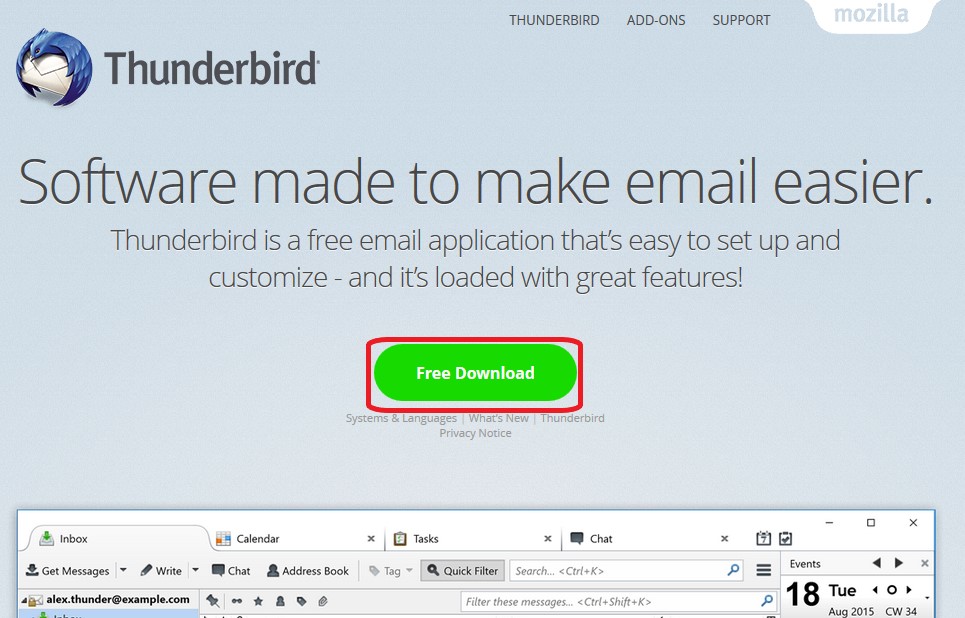
- #Mozilla thunderbird system integration install
- #Mozilla thunderbird system integration password
- #Mozilla thunderbird system integration free
#Mozilla thunderbird system integration password
But it isn’t (there are add-ons to do just this, but I wouldn’t trust my passwords to any of them as none could keep up the pace with the frequent changes in Thunderbird’s security model), and if you don’t provide a master password to the mailer, it will store your keys with just an empty password. This would be fine, if only Thunderbird were using the Gnome keyring as instantiated by Menu› Preferences› Passwords and Keys (Seahorse) to store the passwords of your accounts. Why ? Because there is probably nobody willing to type in passwords every five minutes or so, hence sooner or later you’ll inevitably end up letting the mail program store them. Minimizing will also work if you set a master password in Thunderbird - as you should unless you use an encrypted drive for your home partition.

…$ sudo mv -interactive ~/bin/thunderbird /usr/local/bin You can also move the script there subsequently with the following command: If you want to make it available system wide, that is for all users, you have to replace “~/bin” by “/usr/local/bin” in the initial commands. The script above will be installed as explained for the current user only. Therein, you should adjust the marked value of the Startup Delay in order to allow for Thunderbird to minimize reliably at startup. The purpose of the parameter aforesaid is to start Thunderbird in the background when you log in, so do Menu› Preferences› Startup Applications› Add the starter below to your session. This was the only key combo that worked for me in Cinnamon 2.6, so take care to try it out on some open window, and set it accordingly in (System) Settings› Keyboard› Keyboard shortcuts› Windows› Minimize Windows if necessary. In principle, the script above starts Thunderbird as usual, but waits for its window to show up when it is supplied with a “-min” parameter, and then simulates a key press to minimize it. THUNDERWIN=`xdotool search -name ".*- Mozilla Thunderbird$"|head -n 1` Once the text editor has started, fill in the following contents, and save the file:

After this has been done, you must make up a script for the mailer with the following single but multi-line command from a terminal window (you could do this graphically from Nemo as well, but it would require 8 mouse clicks, whereas by marking the entire command, you’re done with just a left click to start the terminal and a middle one to paste the command ):

#Mozilla thunderbird system integration install
So let’s see how we can force Thunderbird to do so.įirst of all, you need to install a little utility called xdotool, preferably with the Software Manager as it’s always counselled. But to me, a mail program should always run automatically in an invisible manner, unless I want to write a mail or read a new one. The people at Mozilla seem to think that Thunderbird is indispensable at the point that it doesn’t need to be started in the background. As such, it doesn’t target any specific platform, which, in turn, means that in Cinnamon, e.g., there is some room left for improvement regarding its integration into that platform.
#Mozilla thunderbird system integration free
The mail program used by default in Linux Mint is Mozilla Thunderbird, which is an awesome piece of free software.


 0 kommentar(er)
0 kommentar(er)
